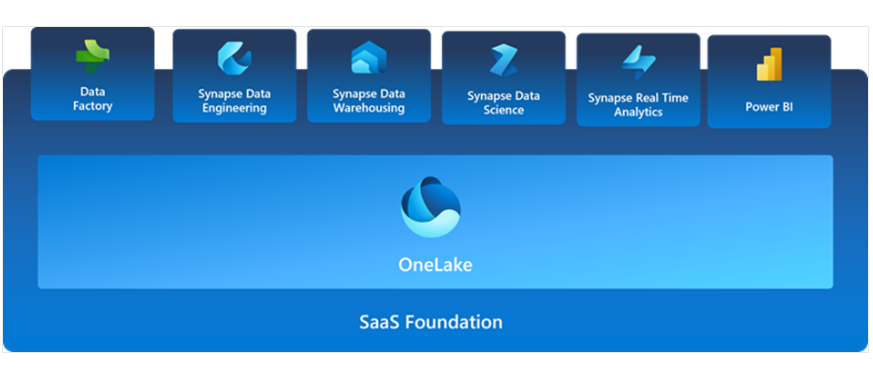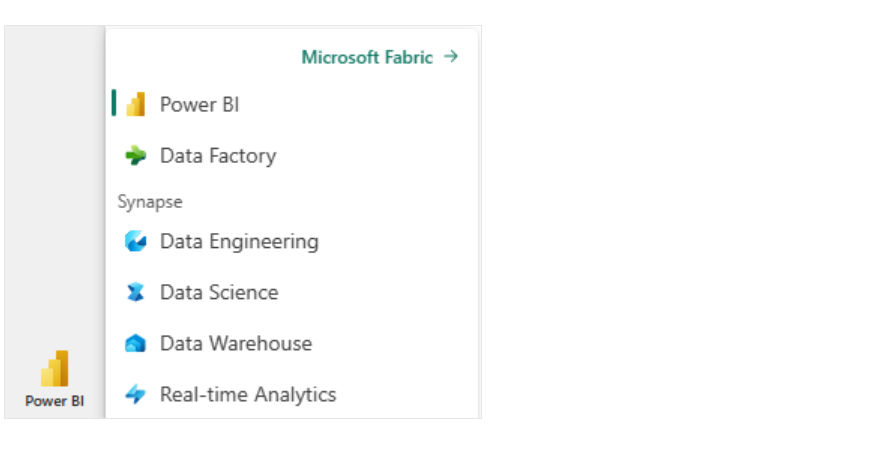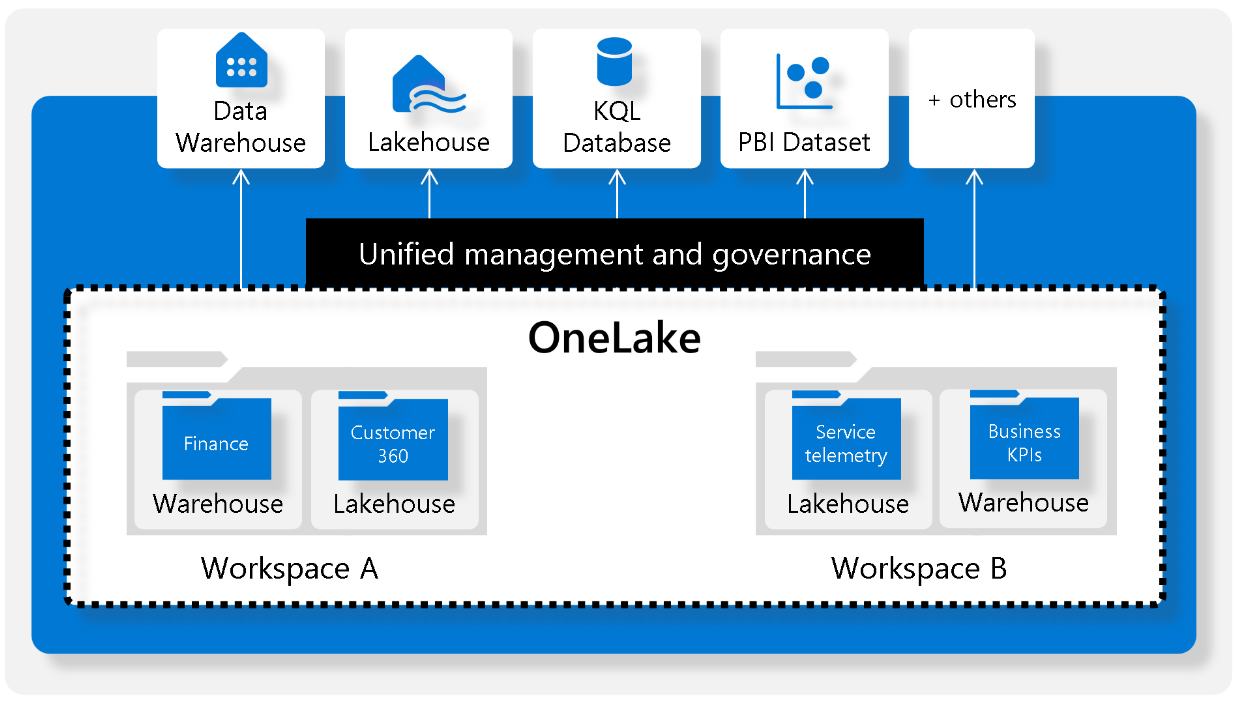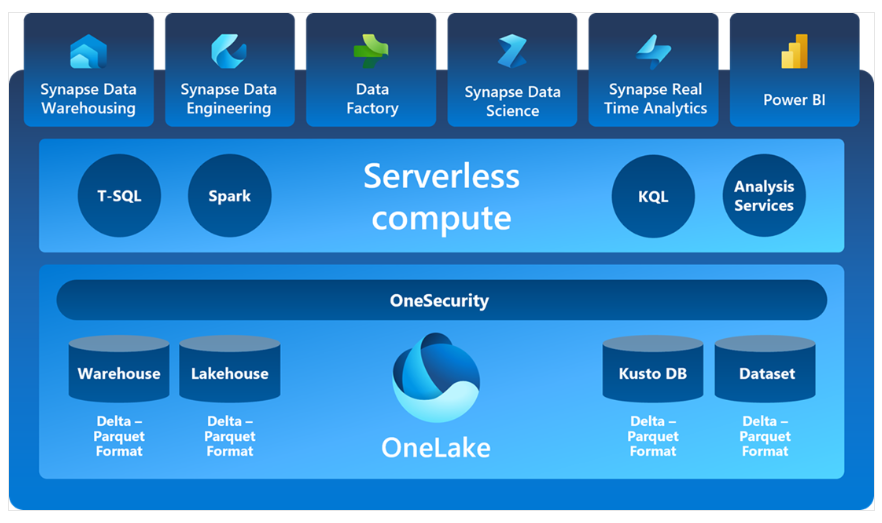Microsoft Fabric
Analytics for the AI era.
What is Microsoft Fabric?
Microsoft Fabric includes everything from data movement to data science, real-time analytics, and business intelligence. Microsoft Fabric is a complete analytics solution for enterprises offering a full suite of services, including data lake, data integration and engineering, all in one place. The Fabric platform is built on a Software as a Service (SaaS) foundation, taking integration to a new level.
Microsoft Fabric SaaS Foundation
Fabric brings together Data Engineering, Data Science, Data Factory, Real-Time Analytics, Power BI, and Data Warehouse, onto a shared SaaS foundation. These are the advantages of this integration:
A broad range of integrated analytics.
Familiar shared experiences that are easy to learn.
Assets are easily accessed and reused by developers.
A unified data lake that lets developers keep their data wherever it is while using preferred analytics tools.
Centralized governance and administration across all experiences.
Components of Microsoft Fabric
Microsoft Fabric offers a set of analytics experiences that work seamlessly together each tailored to a specific persona and specific task. Fabric includes industry-leading experiences in the following categories:
Data Engineering – Provides a Spark platform, enabling large scale data transformation and democratization through the lakehouse.
Data Factory – Combines Power Query and Azure Data Factory.
Data Science – Enables you to build, deploy, and operationalize ML models within Fabric.
Data Warehouse – Provides SQL performance and scale.
Real-Time Analytics – Observational data, collected from various sources such as apps, human interactions, IoT devices and more.
Power BI – World’s leading Business Intelligence platform.
OneLake and Lakehouse
Data Lake is the foundation for Fabric services. Microsoft Fabric Lake is known as OneLake and is built into the Fabric service. This provides a unified location to store all organizational data.
OneLake sits on top of Gen2 Azure Data Lake Storage (ADLK) and provides a single SaaS experience and a tenant-wide store for data for professional and citizen developers. The OneLake SaaS experience eliminates the need for users to understand any infrastructure concepts like resource groups, Azure Resource Manager, redundancy, Role-Based Access Control, or regions and doesn’t require the user to have an Azure account.
OneLake provides a single, unified storage system for developers, where data sharing and discovery is easy and policy compliance and security settings are enforced uniformly.
OneLake and Data Lake Organizational Structure
OneLake is hierarchical to simplify management across the enterprise and is built into Microsoft Fabric so there is no need for up-front provisioning. There is only one OneLake per tenant and it provides a single-pane-of-glass file-system namespace across regions, users, and clouds. The data in OneLake sits in manageable containers for easy handling.
The tenant maps to the root of OneLake at the top level of the hierarchy to create any number of workspaces within a tenant, or thought of as folders.
Every developer and business unit in the tenant can instantly create their own workspaces in OneLake. They can ingest data into their own lakehouses, start processing, analyzing, and collaborating on the data, just like OneDrive in Office.
All Microsoft Fabric compute experiences are wired to OneLake like the Office applications are wired to use the organizational OneDrive. The experiences such as Data Engineering, Data Warehouse, Power BI, Data Factory, and Real-Time Analytics use OneLake as their native store. They do not need extra configuration.




